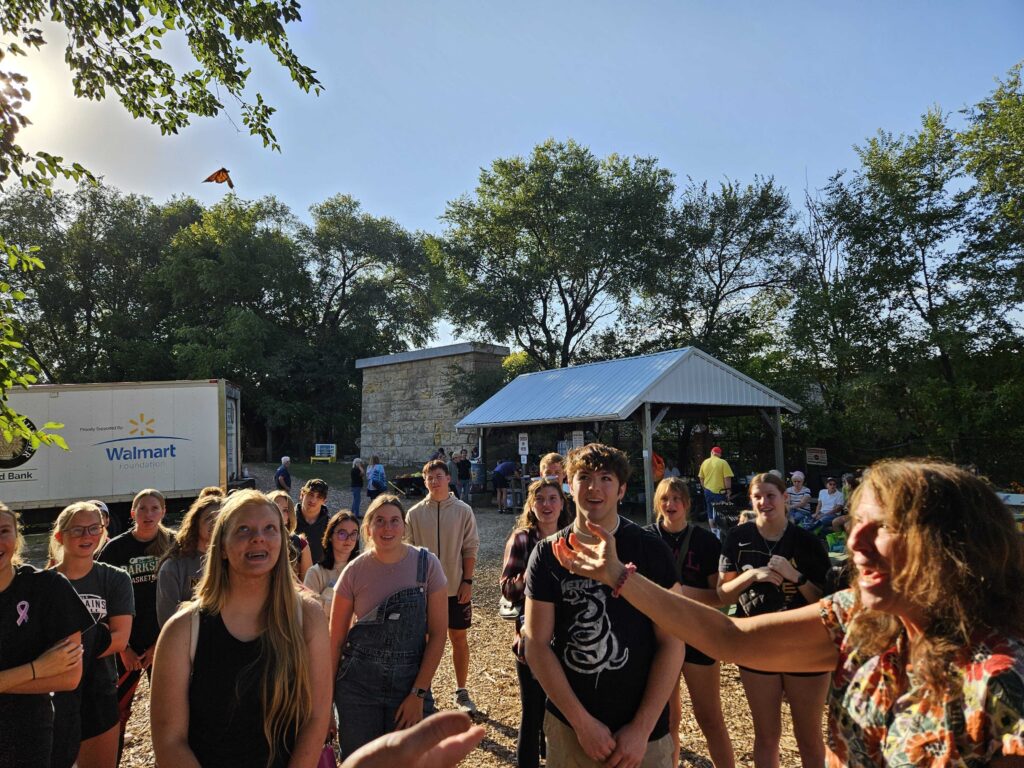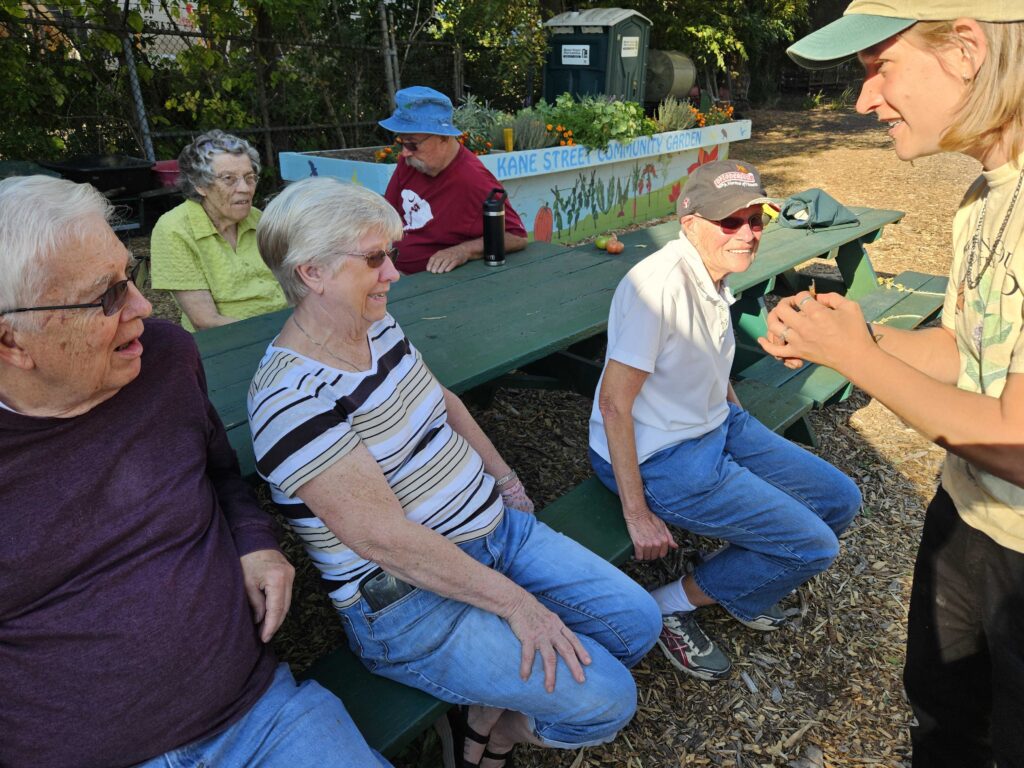Cindy Blobaum | Environmental Education Program Manager
In September 2022, even before I officially started at The Nature Place, I introduced the team to tagging migrating monarch butterflies. Migrating monarchs are the brood that we encounter from late August through mid-October. While our spring and summer monarchs have life spans around 8 weeks total, the migrating ones can live 7 – 8 months (August – March)!
Tagging involves netting a stationary monarch (never a flying one), determining whether it is male or female, affixing a small, coded sticker to the discal cell on a lower hind wing, releasing it, recording the information and submitting the data to Monarch Watch. With a bit of practice, it takes less than a minute per butterfly to complete the entire process.


Tagging is a community-science research project started in 1992 at the University of Kansas’ Monarch Watch program. Each year, over 250,000 tags are mailed to thousands of volunteers in North America east of the Rocky Mountains. The tagged monarchs are a few of the millions that spend their winter on the Oyamel fir trees in Central Mexico. While in Mexico, the butterflies rest on the trees, not feeding or flying. When spring arrives in March, they arise in mass and mate. Males, for the most part, die after mating with their bodies remaining in Mexico. Females fly across the Rio Grande River where they look for emerging milkweed plants, lay their eggs and expire as well.

People in Mexico then work to recover the tagged deceased monarchs. Each recovered tag is worth about $5, which is a financial incentive to discourage the cutting of the vital trees – as monarchs will not roost on any others, and 98% of the Oyamel Fir forests have been destroyed, much of it for farming.
One obvious and important trend that we see is the relative number of monarchs in various areas. In 2022, TNP tagged 26. In 2023, TNP tagged 16. In 2024, TNP has tagged 110 so far. Another positive trend is the increase in the number of people assisting with tagging. We tag with the last group of Summer day campers if possible plus visiting school groups from preK – college classes. This year, we also took the tagging program to Kane St. Community Gardens on distribution days and were met with great interest and appreciation.

Tagging has been an important, fun, and joy-filled occurrence for me the past 15 years and I have loved seeing the reactions to it here. Everyplace I have done it, it has been one of the most immediately inspiring ways to connect people to the nature around them, which ties in so beautifully with our mission:
To inspire and cultivate meaningful connections between people and nature, for the benefit of both.

